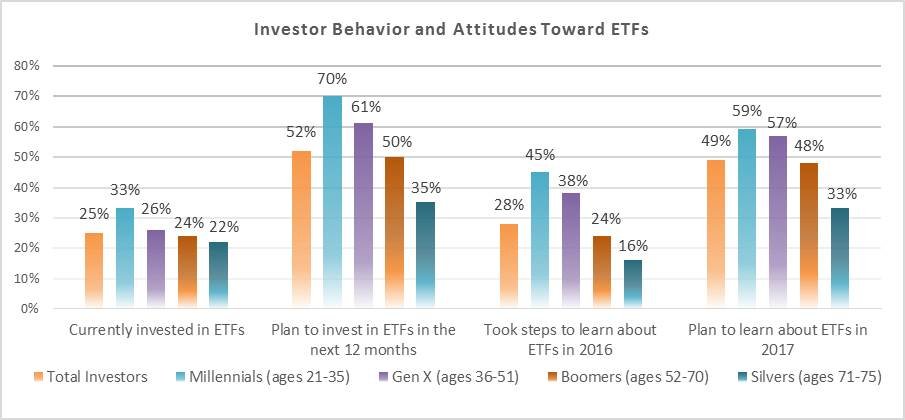2017 was the year of the bull market. While not all indexes experienced gains there were several victors across different sectors. Dow Jones, S&P 500, and Nasdaq all saw record highs at the start of the year. Looking forward to 2018, we examine four trading trends from 2017 that will continue in 2018.
1. The Cryptocurrency Craze
Bitcoin has become one of the most popular investment assets that gained a lot of traction in 2017. The success of Bitcoin gave birth to different ICOs, and some of their digital funds are now being used in the cryptocurrency market. Ethereum and Litecoin are two of the emerging cryptocurrencies in the world right now, and analysts foresee that their demand will continue to rise in 2018. This year, Bitcoin prices are up by 2000%, Ethereum is up 6000%, while Litecoin broke record highs and gained over 9000% in 2017.
There were a lot of skeptics with regards to cryptocurrencies at the beginning of 2017. This is because based on historical data, assets that gain significant amounts of price increases in a short amount of time tend to enter a bubble. Bitcoin has yet to enter a bubble due to the continued high demand.
In 2018, investors can look forward to CBOE and CME finally beginning to trade Bitcoin futures. More trading options for cryptocurrencies will mean a higher demand for digital funds next year.
2. ETFs Had a Great Year
Exchange Traded Funds (ETFs) had a good year thanks in part to its support from millennials. According to a survey by BlackRock about 70% of millennials said that ETFs are their preferred investment vehicle.

Due to ETF’s popularity, it was able to reach over $600 billion in investments in 2017. Analysts say that ETFs are one of the most liquid assets in 2017 because they are quite easy to trade. The millennial support just became visible in 2017 and with this momentum, it is predicted that ETF holdings will be able to skyrocket by 2018.
ETFs allow people to invest in commodities that they don’t physically own. Instead of owning gold bullion or barrels of oil, investors take ETF investments in order to get exposure to a certain market. They have lower mark-ups than mutual funds, and are more passive than stocks. In 2018, the prices of ETFs might go higher due to the demand from millennials.
More people are learning how to trade
More people are becoming interested in investing and trading. This fact proves that investing in financial markets or trading currencies have become an integral part of the people’s livelihood. Apart from stocks, mutual funds, and trading currencies via Forex, more people are becoming curious about binary options, which allow traders to profit from inferences on price movements.
Trading binary options is as simple as answering yes or no to an asset’s price movement. For example, if you think that platinum’s prices will increase at a certain time today, you buy the binary contract. Otherwise, you sell it. Binary options have limited risk and do not ask a huge capital from traders.
Despite its ease of access, however, Nadex’s course on trading strategies states that technical analysis is still involved in trading binary options. Instead of making a wild guess on how a certain asset reacts to news, technical analysts examine what the price is actually doing. Is it making record highs or higher lows repeatedly? Technical analysis is about spotting trends, which is extremely important for binary options. With 2018 predicted to improve on the bull market of 2017 expect more people to learn how to invest in multiple markets.
The Bull Market
The market will continue to have a bullish sentiment among investors thanks to some foreseeable changes in economic policy. In the UK, cryptocurrencies will soon be regulated, which means that more investments will circulate in the country. Regulations yield trust. That said, analysts are confident that more investors will diversify their portfolio with digital funds.
In addition to cryptocurrency, recent data shows that London remains a financial powerhouse despite ongoing Brexit negotiations. In fact, New York — London’s closest rival — fell back due to Donald Trump’s view on free trade. London’s total score based on The Global Financial Centres Index (GFCI) declined by only 2 points after Brexit, while New York fell 24 points.
The question is, will the bull market last continue in 2018? Analysts believe so and have predicted that next year will be as bullish as 2017. Economists are saying that with more money and oversight from the government, businesses will produce significantly higher revenue and profits. It will give the country more jobs that result into better purchasing powers.





























